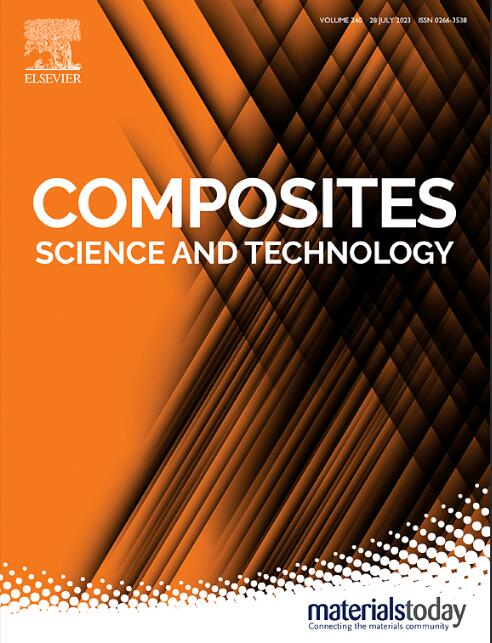Modelling the tensile behaviour of aligned discontinuous carbon fibre thermoplastic matrix composites under processing conditions
IF 8.3
1区 材料科学
Q1 MATERIALS SCIENCE, COMPOSITES
引用次数: 0
Abstract
This study aims to develop a predictive tool for simulating the forming process of aligned discontinuous fibre reinforced composites (ADFRCs). Poly(L-lactic acid) (PLA) reinforced with discontinuous carbon fibres is used to form HiPerDiF tapes. An analytical micromechanical model is developed to predict the tensile stress of the tape as a function of tensile strain rate, incorporating the viscoelastic properties of the PLA matrix and the microstructural characteristics of the tape. The model uses a Maxwell approach for the viscoelastic behaviour of PLA and assumes tensile load transfer between fibres via matrix shearing. Additionally, a degree of crystallisation is integrated to account for a small amount of crystallisation that develops in the PLA whilst brought to temperature. This parameter is determined by fitting experimental data prior to validation. Hence, the model's predictions at temperatures at which the tape was not originally characterised and for non-monotonic deformation speeds fell within the 95 % confidence interval of a new set of experimental data. This work offers a pragmatic approach for optimising the forming of ADFRCs from the knowledge of known microstructural characteristics of the tape (i.e., fibre length, radius and volume fraction and resin viscosity and storage modulus).
对准不连续碳纤维热塑性基复合材料在加工条件下的拉伸行为建模
本研究旨在开发一种用于模拟定向不连续纤维增强复合材料(ADFRCs)成形过程的预测工具。用不连续碳纤维增强的聚l -乳酸(PLA)用于形成HiPerDiF胶带。结合PLA基体的粘弹性特性和胶带的微观结构特性,建立了一个分析微力学模型来预测胶带的拉伸应力作为拉伸应变率的函数。该模型使用麦克斯韦方法来分析PLA的粘弹性行为,并假设纤维之间的拉伸载荷通过基体剪切传递。此外,一定程度的结晶被整合到PLA中,以解释在温度下产生的少量结晶。该参数在验证前通过拟合实验数据确定。因此,该模型在胶带最初未被表征的温度下的预测,以及对非单调变形速度的预测,都在一组新实验数据的95%置信区间内。这项工作提供了一种实用的方法,可以根据已知的胶带微观结构特征(即纤维长度、半径、体积分数、树脂粘度和储存模量)来优化ADFRCs的成型。
本文章由计算机程序翻译,如有差异,请以英文原文为准。
求助全文
约1分钟内获得全文
求助全文
来源期刊

Composites Science and Technology
工程技术-材料科学:复合
CiteScore
16.20
自引率
9.90%
发文量
611
审稿时长
33 days
期刊介绍:
Composites Science and Technology publishes refereed original articles on the fundamental and applied science of engineering composites. The focus of this journal is on polymeric matrix composites with reinforcements/fillers ranging from nano- to macro-scale. CSTE encourages manuscripts reporting unique, innovative contributions to the physics, chemistry, materials science and applied mechanics aspects of advanced composites.
Besides traditional fiber reinforced composites, novel composites with significant potential for engineering applications are encouraged.
 求助内容:
求助内容: 应助结果提醒方式:
应助结果提醒方式:


